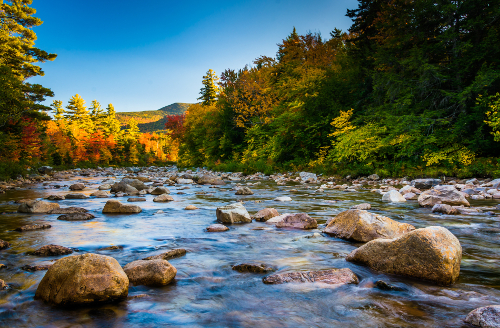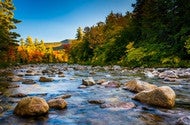How The Wilderness Act of 1964 Changed America
Nov 15th 2019
 People have always loved the outdoors, especially in its rawest, most natural state. Whether you climb mountains, enjoy family camping trips, hike and backpack through backwoods trails, shoot the rapids, or cherish a day spent casting your line into a mountain stream, you owe The Wilderness Act of 1964 for all these well-preserved gifts of nature.
People have always loved the outdoors, especially in its rawest, most natural state. Whether you climb mountains, enjoy family camping trips, hike and backpack through backwoods trails, shoot the rapids, or cherish a day spent casting your line into a mountain stream, you owe The Wilderness Act of 1964 for all these well-preserved gifts of nature.
The Birth Of The Act
On January 21, 1935, eight men who were passionate about preserving America's wilderness and protecting it from ravage by corporations and conglomerates founded and incorporated The Wilderness Society. This heroic group spawned some of the most outstanding conservationists of the 20th century.
The Wilderness Society fought for more than 20 years to preserve pristine land and waterways throughout the country. By 1955, former Wilderness Society Executive Director Howard Zahniser had become disheartened with weak and inconsistent attempts at preservation. Zahniser publicly stated, "Let us be done with a wilderness preservation program made up of a sequence of overlapping emergencies, threats, and defense campaigns." In 1956, Zahniser wrote the first draft of the Wilderness Act to ensure the protection would grow stronger and better shield America's remaining uncultivated and uninhabited regions.
President Lyndon B. Johnson signed the Wilderness Act into law on September 3, 1964, after the document went through eight years and 66 revisions. Sadly, Zahniser never saw his dream come to fruition as he died four months prior on May 4, 1964, at the age of 58.
What The Act Did For America
The National Wilderness Preservation System was a result of The Wilderness Act, hailed as one of America's best conservation accomplishments. The act solidified the country's commitment to protect the unblemished areas at nearly any cost. The act established a means for Americans and their elected Congress to clearly define "wilderness areas," which symbolize America's uppermost structure of land security. Vehicles, roads and permanent structures are forbidden in these designated areas, as are logging and mining operations.
The act instantly protected 9.1 million acres of untamed land, (a.k.a. designated wilderness), across America under the laws and statutes of the National Wilderness Preservation System. New wildlands are nominated every year for inclusion in the protection program.
The National Wilderness Preservation System
The Wilderness Act formed and put 54 areas into the system right away. This included 9.1 million acres in 13 states, allowing a grand total of 109 million acres was added to the National Wilderness Preservation System. The most famous areas included in the first major move the act initiated included Boundary Waters Canoe Area Wilderness, Minnesota; Bridger Wilderness, Wyoming; Bob Marshall Wilderness, Montana and Ansel Adams Wilderness, California.
The nearly 110 million acres of land protected today in America are all part of our national wildlife refuges, national parks, Bureau of Land Management lands and national forests.
America's protected wilderness system currently includes:
- Wilderness areas in 44 states
- Nearly 110,000,000 million acres of sheltered wilderness
- More than 750 protected wilderness throughout the country
The next time your breath is taken away by the sight of a surreal natural wonder, be thankful for the valiant efforts of our forefathers.

